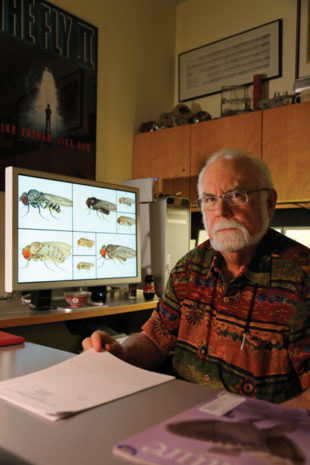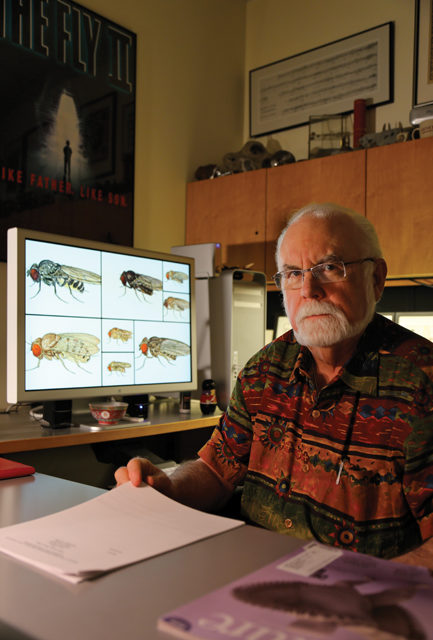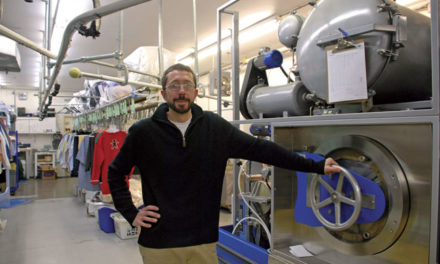
BY JANET MANDELSTAM
It may be hard to believe, but that pesky fruit fly checking out the ripe bananas in your kitchen is, in the words of Indiana University scientist Thom Kaufman, “a genetic workhorse.”
For more than 100 years, scientists have been using the humble fly as a critical tool to study heredity, human biology, and disease.
Now Kaufman, distinguished professor of biology, and nine other IU scientists are among the authors of a new study of Drosophila melanogaster [the common fruit fly] that identified 1,468 new genes. “The genome [the genetic material of an organism] of the fruit fly has been completely sequenced. We thought we knew all the genes,” he says, “but we discovered hundreds more.”
The scientists studied the flies at different stages of development and exposed adult flies to “insults” like heat, cold, heavy metals [such as lead and mercury], caffeine, nicotine, and insecticide. They showed that the flies experience interesting — and sometimes surprising — changes as a result of these environmental stresses. In the heavy metals experiment, for example, “a known set of genes turned on, but other genes turned on as well,” Kaufman says. “We don’t know what all of them are doing and if there are human counterparts.”
Kaufman tells the story of a man who was being treated for cancer for a number of years but was getting sicker. The genetic origin of the cancer was known, so a scientist in New York created a model of the man’s cancer in a fruit fly. He then took all of the available chemotherapy drugs and treated the fly with them to see how it would react. Based on the response of the fly, the scientist found a chemical cocktail to treat the man, whose condition improved. The whole process took only a few weeks. “You could do it very quickly with a fly,” Kaufman says. “You also could do it with a mouse, but that could take months.”
IU has long been an important center of fruit fly research. Its Bloomington Drosophila Stock Center raises flies — more than 50,000 mutant lines — and distributes them to laboratories around the world.
The new study was published in the journal Nature. Kaufman says scientists will take what they have learned and “will now look at a human disease model. What does a diseased fly look like? Are there genes being turned on that we don’t know about, as happened when the flies were exposed to heavy metals? Today’s technology using the fruit fly is so developed that if you can imagine an experiment, you can do it. We’ve only just begun.”












